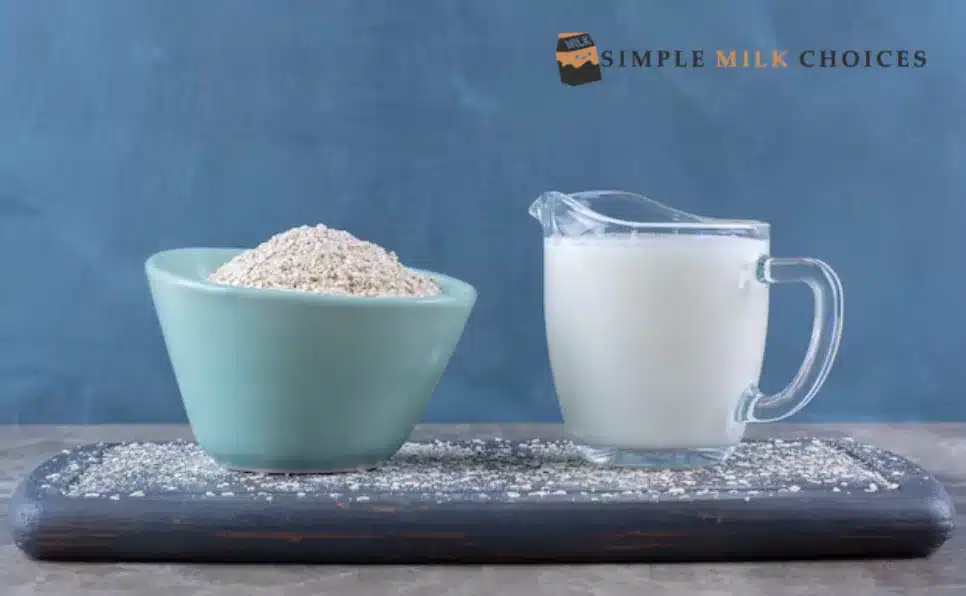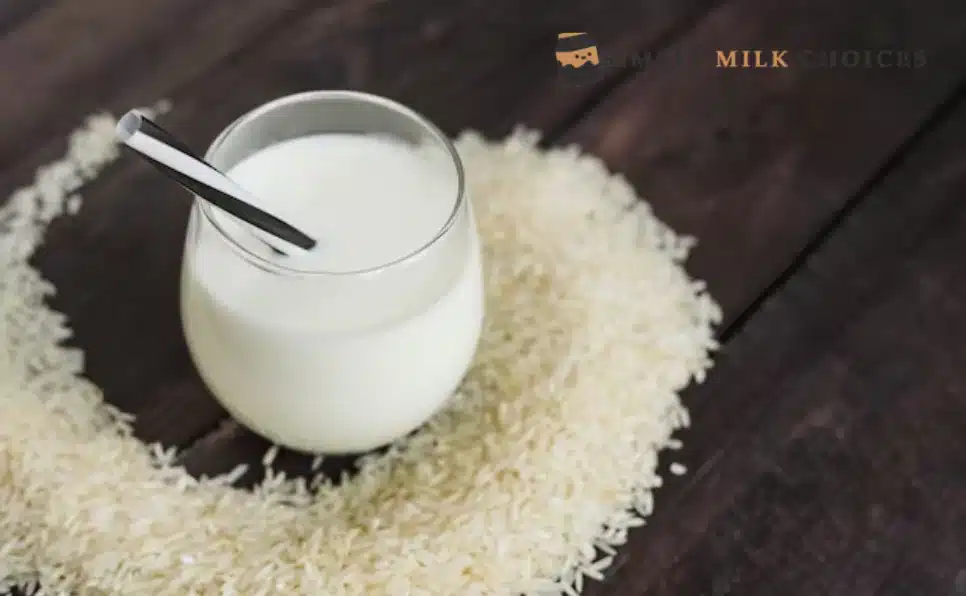Rice milk, a popular dairy alternative, has gained traction due to its suitability for various dietary needs. It serves as an excellent option for individuals with lactose intolerance, allergies, or a vegan diet. This section explores the concept of homemade rice milk as an alternative to store-bought varieties. The article offers a step-by-step guide to making rice milk at home, providing an easy way to enjoy this dairy-free alternative and savor homemade goodness.
Nutritional Composition of Rice Milk
Rice milk is a dairy-free refreshment produced using processed rice and water. Typically, it’s lower in calories than cow’s milk, making it a suitable choice for people who want to deal with their calorie intake. However, it’s important to note that rice milk could contain added sugars, influencing its overall nourishing profile.
Advantages of Rice Milk
Suitable for Dietary Limitations
- Lactose-Free: Rice milk is normally without lactose, making it an optimal choice for people with lactose prejudice or dairy sensitivities.
- Nut-Free and Soy-Free: unlike almond milk or soy milk, rice milk doesn’t contain nuts or soy, taking care of those with nut sensitivities or soy allergies.
Medical Advantages
- Heart health: Because of its absence of saturated fats and cholesterol, drinking rice milk might contribute to heart health by reducing the risk of cardiovascular diseases related to high-intensity fat intake.
- Low in Saturated Fats: Rice milk is, for the most part, low in soaked fats, which adds to a heart-solid eating routine.
- Cholesterol-Free: Being without cholesterol, rice milk upholds heart health and is beneficial for those checking cholesterol levels.
Fortification
- Braced with Supplements: Some commercially accessible rice milk items are fortified with nutrients and minerals like calcium, vitamin D, and B nutrients, upgrading their health benefits and making them comparable to dairy milk concerning these additional nutrients.
- Digestive Sensitivity: Rice milk tends to be gentle and delicate on the stomach, making it suitable for people with sensitive digestive systems or gastrointestinal issues.
- Flexibility in Cooking: Its gentle taste and texture make rice milk a flexible fix in cooking and baking, suitable for different recipes and culinary purposes.
Disadvantages of Rice Milk
- Lower Protein Content: Contrasted with cow’s milk or considerably other plant-based choices like soy or almond milk, rice milk normally contains a lower protein content. This may be a thought for people who depend intensely on milk for their protein intake.
- Normal Sugars: Rice milk can contain normally occurring sugars from the rice; however, a few financially accessible choices might have added sugars for flavor enhancement. It’s critical to check marks for sugar content, particularly for those observing their sugar intake.
Essential Supplies
Uncooked Rice
Settle for white or brown rice, as the two varieties work admirably for making rice milk. Brown rice tends to provide a slightly nuttier flavor and more nourishing advantages because of its higher fiber content.
Water
Filtered water is typically used to splash the rice and mix it with milk. The water-to-rice proportion might differ depending on the ideal consistency of the milk.
Blender
A high-velocity blender is vital for achieving a smooth and velvety texture while mixing the splashed rice and water. A strong blender helps separate the rice grains successfully.
Strainer or Cheesecloth
A fine-mesh strainer or cheesecloth is essential for stressing the mixed blend to eliminate any excess rice particles and get a velvety consistency for the milk.
Storage Container Having an airtight holder or container for putting away the prepared rice milk is essential to keeping up with its freshness and preventing defilement. Glass containers are often preferred for storing homemade plant-based milk.
Related Article: Shelter Life of Soy Milk
Ingredients
Uncooked rice is the principal element in making rice milk. It’s advisable to rinse the rice completely before soaking to remove any flotsam, jetsam, or overabundance of starch.
Optional Flavorings
To improve the flavor of the rice milk, one can add optional flavorings like vanilla concentrate, maple syrup, honey, or sugar of choice. Flavors like cinnamon or nutmeg can also be included for added character.
Invigorating Specialists
Some might decide to invigorate the rice milk by adding extra nutrients, for example, calcium or nutrients like vitamin D or B12. These fortresses plan to make homemade rice milk practically identical to store-bought varieties.
Having these essential supplies and ingredients ensures a consistent and effective interaction while making rice milk at home. The nature of these things, especially the rice and water utilized, can essentially affect the taste and consistency of the eventual outcome. Fitting the fixings and amounts in light of individual inclinations ensures a tweaked and delightful homemade rice milk insight.
Related Article: What Soy Milk Does Starbucks Use?

Preparing the Rice
Rinsing the Rice
Start by rinsing the uncooked rice completely under cool water. This step helps remove the excess starch, which, with canning, adds to the coarse texture of the last milk.
Soaking the Rice
Place the washed rice in a bowl and cover it with water. Allow the rice to drench for at least 4-6 hours or short-term. This splashing period relaxes the rice grains, making them easier to mix and concentrate flavor.
Blending Process
Draining and Washing
After splashing, channel the water from the rice and wash it. This step helps remove any extra starch and ensures a cleaner mix.
Mixing Rice and Water
Place the absorbed and flushed rice in a blender. Add new sifted water in a proportion that suits the ideal consistency (typically around 1 cup of rice to 4-6 cups of water). Mix the combination at high velocity for 1-2 minutes until the rice is finely ground and all around integrated with the water.
Stressing and Refining
Stressing the Combination
Position a fine-mesh strainer or cheesecloth over a large bowl or container. Carefully pour the mixed rice combination through the sifter to isolate the rice mash from the fluid. Press down on the mash to remove as much fluid as possible.
Refining the Milk
For an even smoother texture, strain the rice milk a second time, utilizing a better strainer or cheesecloth. This step helps remove any leftover dirt or particles, bringing about a silkier consistency.
Storing the Rice Milk
Move to a Container
Pour the freshly made rice milk into a clean, airtight container. Seal the container properly to maintain freshness.
Refrigeration
Store the rice milk in the cooler for up to 4–5 days. Shake or mix the milk before utilizing it, as regular settling might happen.
Enhancing and Customization
Adding Flavorings
To upgrade the taste, add vanilla concentrate, sugars like maple syrup or honey, or flavors like cinnamon. Change the flavors in light of individual inclinations.
Adhering to these bit-by-bit guidelines ensures homemade rice milk that is free from added substances or additives. Trying different things with drenching times, water proportions, and flavor increases considers customization, empowering people to make rice milk homemade as they would prefer inclinations and dietary needs.

Capacity of Natively Constructed Rice Milk
Sealed-Close Holders
Move the newly made rice milk into a spotless, impenetrable holder or jug for ideal capacity. Ensure that the container is entirely cleaned and disinfected to maintain freshness.
Refrigeration
Store the rice milk in the cooler to protect its quality. Refrigeration dials back bacterial development and keeps up with the milk’s freshness. Appropriately fixed compartments keep different flavors in the cooler.
Stay away from Defilement
To forestall tainting, utilize a clean spoon or pour the milk rather than straightforwardly drinking from the container. This expands the period of usability by preventing bacterial presentation.
The Period of Usability of Home-Made Rice Milk
Common Period of Usability
Homemade rice milk normally keeps up with freshness for around 4 to 5 days when put away in the fridge. Be that as it may, the period of usability could change depending on factors like temperature variances, tidiness during planning, and the holder’s quality.
Check for Decay
Notice the rice milk for any indications of deterioration, for example, an off smell, strange variety changes, or division. Dispose of the milk, assuming you notice any of these signs, and try not to polish off a ruined item.
Use of Rice Milk in Cooking
Adaptable Ingredient
Integrate rice milk into recipes that call for milk, like soups, sauces, flapjacks, or prepared merchandise. Its gentle flavor makes it reasonable for both sweet and exquisite dishes.
Cooking and Baking
Integrate rice milk into recipes that call for milk, like soups, sauces, flapjacks, or prepared merchandise. Its gentle flavor makes it reasonable for both sweet and exquisite dishes.
Refreshment Applications
Use rice milk as a base for smoothies, espresso, tea, or hot cocoa. Its light and somewhat sweet taste supplements many drinks.
Customization
Change the consistency and kind of rice milk given the expected use. Add sugars, flavors, or concentrates to fit explicit recipes or individual taste inclinations.
By putting away natively constructed rice milk appropriately in the fridge and being mindful of indications of deterioration, people can partake in its newness for a few days. Furthermore, its flexibility in different culinary applications makes it a significant dairy elective in cooking, baking, and drink readiness.
Recap of Central Issues
Advantages of Rice Milk
Sum up the dietary benefits and medical advantages of picking rice milk as a dairy alternative. Feature its suitability for different dietary inclinations; for example, a veggie lover without lactose or sensitivity well-disposed slims down.
DIY Approach
Repeat the simplicity and cost-adequacy of getting ready rice milk at home. Accentuate the command over fixings and customization choices, which empower people to fit the milk to their preferences.
Healthy Benefit
Stress the dietary substance of natively constructed rice milk and its correlation with locally acquired other options. Talk about the likely advantages of invigorating homemade rice milk with extra supplements.
Conclusion
In conclusion, crafting homemade rice milk offers a simple but rewarding process. It allows individuals to personalize their dairy alternatives to suit their dietary needs and taste preferences. The ease of making rice milk involves minimal ingredients. It also requires minimal equipment, making it an accessible option for those seeking dairy-free alternatives. By following simple steps involving soaking, blending, and straining, individuals can create a creamy, versatile milk substitute at home. Experimenting with flavor additions or sweeteners further enhances the customization of this plant-based milk, enabling individuals to enjoy a nutritious, homemade drink while exploring a sustainable and cost-effective approach to dairy alternatives.
FAQ’s
Is rice milk a reasonable option for people with lactose – intolerance?
Indeed, rice milk is normally without lactose, making pursuing it an incredible decision for individuals who are lactose intolerant or delicate to dairy products.
Does rice drain contain calcium and other essential supplements?
Some financially accessible rice milk variations are braced with calcium and nutrients like D and B12 to improve their health. In any case, the inherent substance of these supplements in rice milk is by and large lower than that in dairy milk.
Will rice drain add to heart health?
Rice milk might contribute to heart health due to its low saturated fat and cholesterol content. This attribute could potentially lessen the risk of cardiovascular diseases associated with high saturated fat consumption.
How does the protein content in rice milk contrast with other milk choices?
Rice milk commonly has a lower protein content compared with cow’s milk. Additionally, it tends to have less protein than some other plant-based options, like soy or nut-based milk. People who depend vigorously on milk for protein admission could have to think about this angle.
Are there any worries about the starch content of rice milk?
Rice milk can contain a generally higher sugar content compared with other plant-based options. People overseeing starch admission should think about this viewpoint as a component of their dietary preparation.
Are there varieties in sugar content in various kinds of rice milk?
Indeed, some financially accessible rice milk might contain added sugars for flavor improvement.





